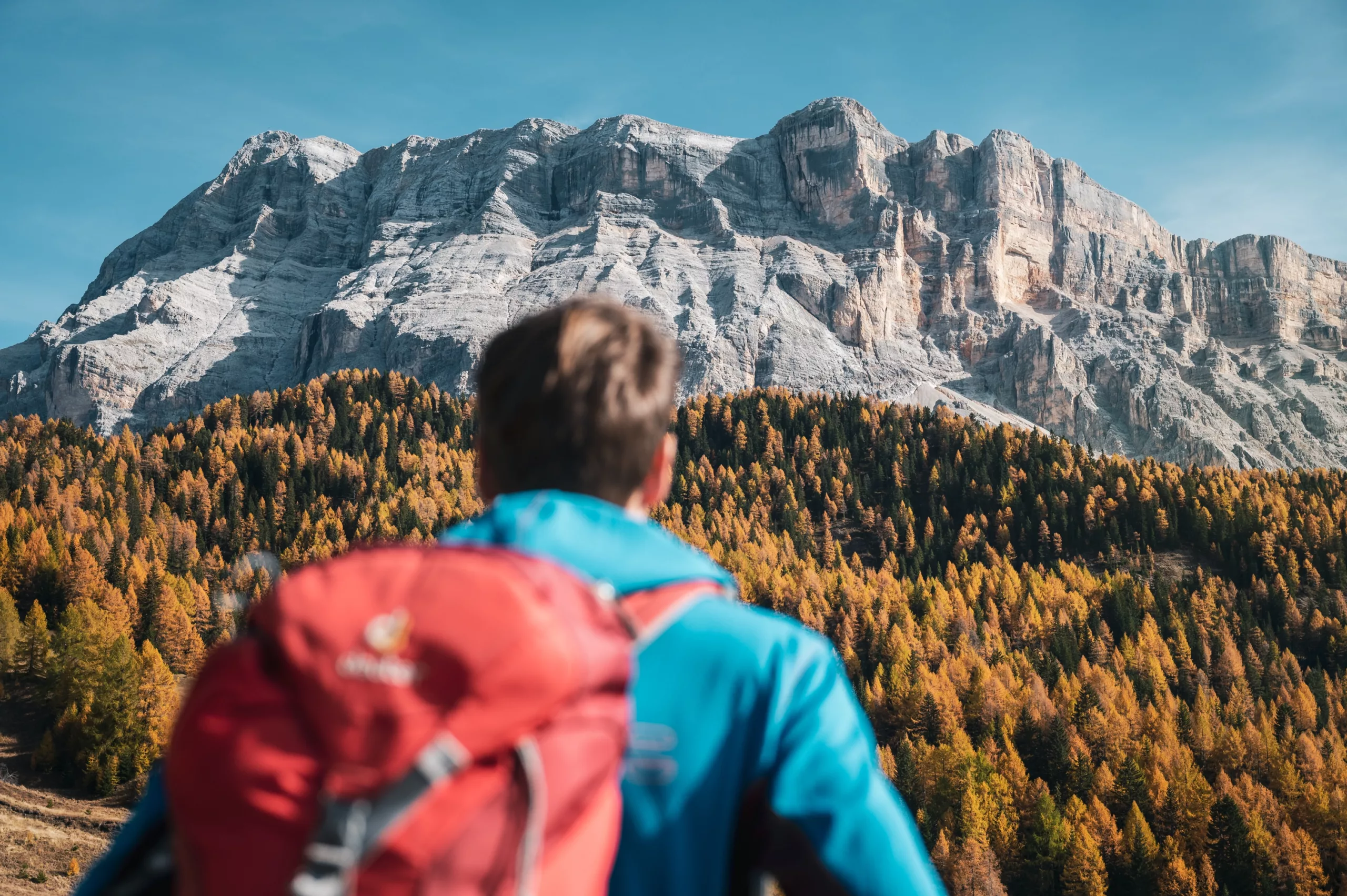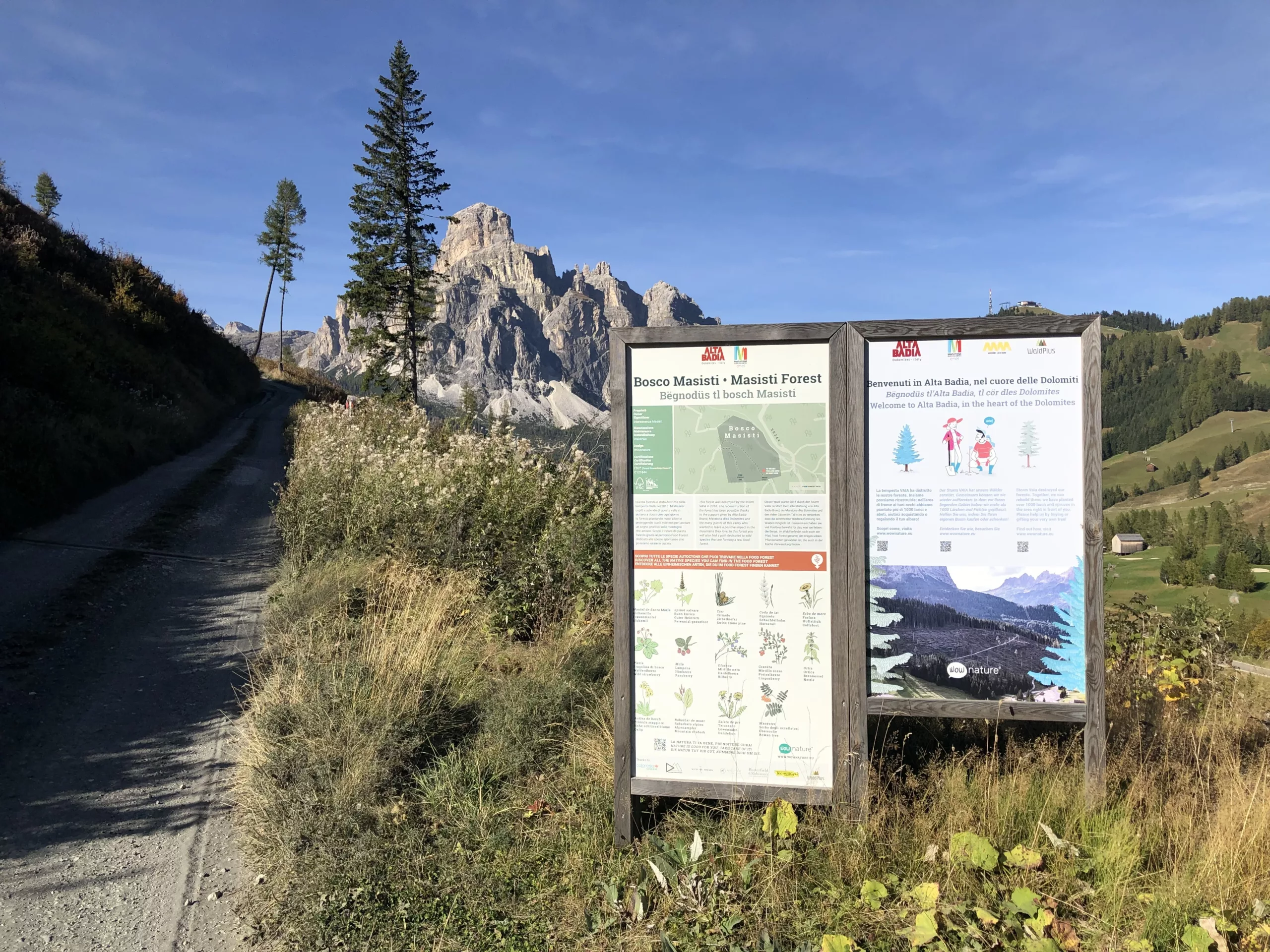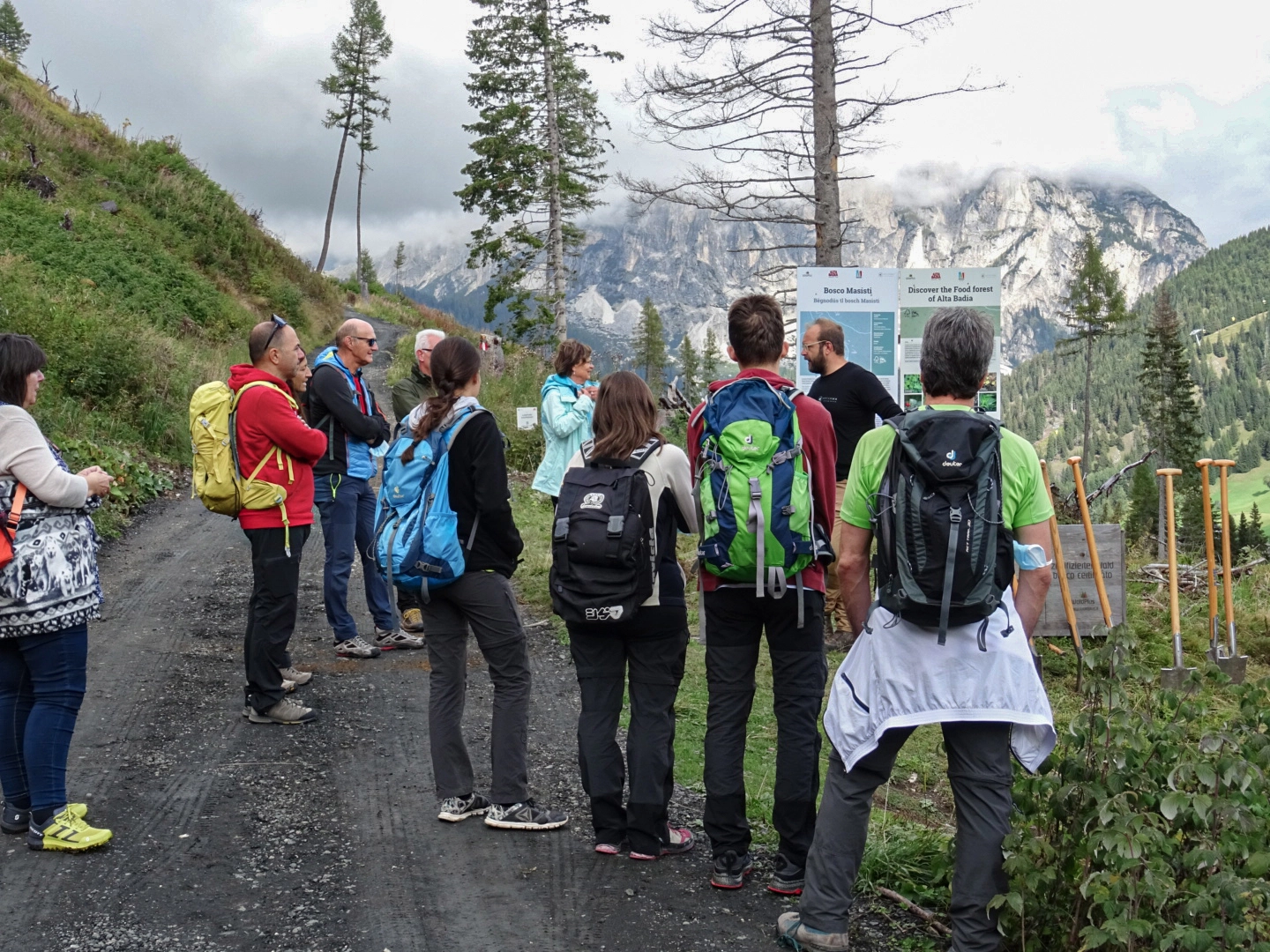After the Vaia storm, tourists in Alta Badia become protagonists in the area’s regeneration.
- Tourism
- Alta Badia
- 2020-2024
- www.altabadia.org

Alta Badia is a mountain tourist destination in South Tyrol. One of the area’s characteristics is its Ladin heritage, which is still well preserved and composed of its language, traditions, and philosophy, strongly linking people to nature. The destination has been part of the UNESCO Dolomites Heritage since 2009, a reason that requires special attention in its management. For this reason, Alta Badia Brand has decided to actively engage in a path of sustainability and, in 2022, obtained the Global Sustainable Tourism Council (GSTC).
The project
On the night of October 28, 2018, storm Vaia hit the area, causing the loss of 41,000 hectares of forests and 2.8 billion euros in damage. To deal with this situation, Etifor accompanied Alta Badia in defining an action plan considering internationally recognized standards, including the FSC above, GSTC, and the Greenhouse Gas Protocol (GHG).
The three standards were considered in the development of a climate plan, consisting of three steps:
– Measure to understand the impact of the tourism value chain on the destination;
– Involve all stakeholders in reducing and offsetting emissions;
– Regenerate and give back with projects that improve the environment and well-being of the local community.
Our contribution
Etifor accompanied Alta Badia Brand on this journey. The goal of the first phase was to quantify the tourism sector’s greenhouse gas emissions in the municipalities belonging to the tourist destination Alta Badia. Then, through a shared and participatory process by all stakeholders in the valley, we aimed to reduce them as much as possible and compensate them where necessary.
The role of the tourists themselves was enhanced by starting with a crowdfunding campaign through the WOWnature platform, where it was possible to fund the reforestation of the area, and a collaboration was initiated with some tour operators to make a climate-positive festival of the book.
The final phase of the project, aptly named ‘regeneration ‘, focused on the reforestation of the area devastated by Vaia. All stakeholders were invited to participate in the reforestation events, which followed a rigorous forestry plan with FSC certification of the wood. The area was reforested using various approaches, with the aim of determining the most effective one over the next 10 years.
Regeneration also included developing a food forest experience with panels informing visitors about the characteristics and uses of the wild species. In addition, a guided experience was designed in collaboration with a local chef and a botanical expert. Tourists proceed along a trail and are educated about the effects of climate change, the characteristics of local herbs, their uses in cooking, and their healing properties.



